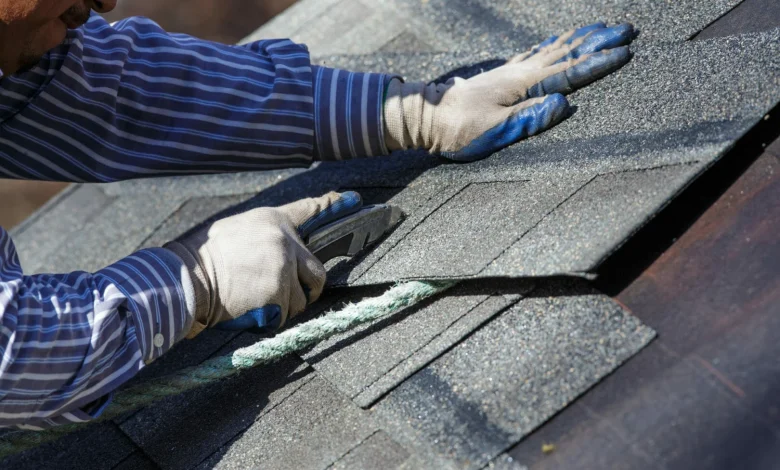Common Roofing Problems and How to Fix Them

A well-maintained roof is essential for protecting your home from the elements and ensuring its longevity. However, various issues can arise over time, compromising the integrity of your roof. In this article, we’ll discuss common roofing problems and how to fix them, with a focus on residential roofing and tips from experts like Frog Roofing.
1. Leaks and Moisture
Causes:
Leaks are one of the most common roofing problems, often caused by damaged shingles, flashing issues, or poor installation. Moisture can seep into your home, leading to mold growth and structural damage.
Fix:
Identify the source of the leak by inspecting your roof for damaged or missing shingles, cracks in the flashing, or areas where water may pool. Replace damaged shingles and repair or replace flashing as needed. Ensure proper sealing around vents, chimneys, and skylights.
Prevention:
Regular inspections and maintenance can help identify potential leak sources before they become significant problems. Keep your gutters clean and ensure proper attic ventilation to reduce moisture buildup.
2. Damaged Shingles
Causes:
Shingles can be damaged by severe weather, falling debris, or simply age. Curling, cracking, and missing shingles can expose your roof to further damage.
Fix:
Replace damaged shingles promptly to prevent water infiltration. For small areas, you can replace individual shingles, but extensive damage may require a full roof replacement.
Prevention:
Choose high-quality shingles and consider weather-resistant options if you live in an area prone to severe weather. Regular inspections, especially after storms, can help you catch and address damage early.
3. Flashing Issues
Causes:
Flashing, the metal strips around roof features like chimneys and vents, can become loose, corroded, or improperly installed, leading to leaks.
Fix:
Inspect flashing regularly and replace any damaged or corroded sections. Ensure flashing is properly sealed with roofing cement to prevent water penetration.
Prevention:
Proper installation is key to preventing flashing issues. Hire experienced contractors like Frog Roofing to ensure flashing is installed correctly and inspect it regularly for signs of wear or damage.
4. Ponding Water
Causes:
Flat or low-slope roofs can experience ponding water, which occurs when water fails to drain properly and pools on the roof surface. This can lead to leaks and structural damage.
Fix:
Improve drainage by ensuring gutters and downspouts are clear and functional. Consider installing a tapered insulation system to promote better water runoff. In some cases, additional drains or a new roofing membrane may be necessary.
Prevention:
Regular maintenance and cleaning of gutters and downspouts can prevent water buildup. Ensure your roof has adequate drainage systems in place and consider periodic inspections to identify potential drainage issues.
5. Roof Ventilation Problems
Causes:
Inadequate ventilation can cause moisture buildup in the attic, leading to mold growth, increased energy costs, and reduced roof lifespan.
Fix:
Install proper ventilation systems, including ridge vents, soffit vents, and attic fans, to promote airflow and reduce moisture. Ensure existing vents are not blocked by insulation or debris.
Prevention:
Regularly inspect your attic and roof ventilation systems to ensure they are functioning correctly. Proper ventilation not only extends the life of your roof but also improves energy efficiency and indoor air quality.
6. Ice Dams
Causes:
Ice dams form when snow melts on the roof, runs down, and refreezes at the eaves, creating a barrier that prevents proper drainage. This can lead to leaks and water damage.
Fix:
Remove ice dams carefully using a roof rake or by applying ice melt products. Avoid using sharp tools that can damage shingles. Improve attic insulation to prevent heat loss and reduce the risk of ice dams forming.
Prevention:
Proper insulation and ventilation are crucial in preventing ice dams. Seal any gaps that allow warm air to escape into the attic and consider installing heated cables along the eaves to prevent ice buildup.
7. Punctures and Holes
Causes:
Punctures and holes can occur due to falling branches, severe weather, or improper installation. These openings can allow water to infiltrate and cause significant damage.
Fix:
Repair small punctures with roofing cement or sealant. For larger holes, replace the affected section of the roof. If the damage is extensive, consider hiring a professional roofing contractor like Frog Roofing to assess and repair the damage.
Prevention:
Regularly trim trees near your home to prevent branches from falling on your roof. Conduct periodic inspections, especially after storms, to identify and address any punctures or holes promptly.
8. Blistering and Cracking
Causes:
Blistering and cracking can occur due to poor installation, UV exposure, or trapped moisture within the roofing materials. These issues can compromise the integrity of your roof and lead to leaks.
Fix:
Repair blisters and cracks by removing the damaged section and applying a new layer of roofing material. Ensure proper installation techniques to prevent future issues.
Prevention:
Choose high-quality roofing materials that are resistant to UV damage. Regular inspections and maintenance can help identify early signs of blistering or cracking, allowing for timely repairs.
9. Granule Loss
Causes:
Asphalt shingles can lose granules over time due to weathering, age, or physical damage. Granule loss can expose the underlying shingles to UV damage and reduce their effectiveness.
Fix:
Inspect your roof for areas with significant granule loss. Replace affected shingles to restore protection. If granule loss is widespread, consider a roof replacement.
Prevention:
Regular inspections and maintenance can help you catch granule loss early. Choose shingles with high durability and weather resistance to minimize granule loss over time.
10. Tree Damage
Causes:
Overhanging tree branches can rub against the roof, causing damage to shingles and other roofing materials. Falling branches during storms can also puncture or damage the roof.
Fix:
Trim overhanging branches regularly to prevent them from contacting your roof. Remove any branches that have fallen onto the roof promptly to avoid further damage.
Prevention:
Maintain trees around your property by trimming branches that are close to the roof. Regularly inspect your roof for any signs of damage caused by tree branches and address issues immediately.
Conclusion
Maintaining your roof is crucial for the longevity and safety of your home. Regular inspections, timely repairs, and proper maintenance can prevent many common roofing problems. By addressing issues promptly and seeking professional help when needed, you can ensure your roof remains in excellent condition for years to come. Experts like Frog Roofing offer valuable services and advice for residential roofing, helping you protect your investment and maintain a safe, comfortable home.



